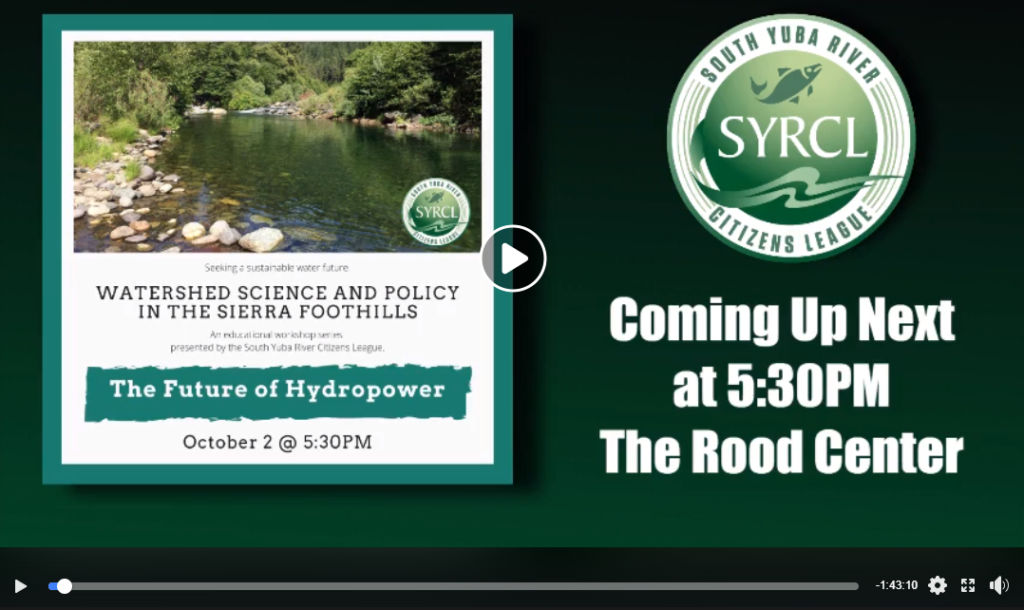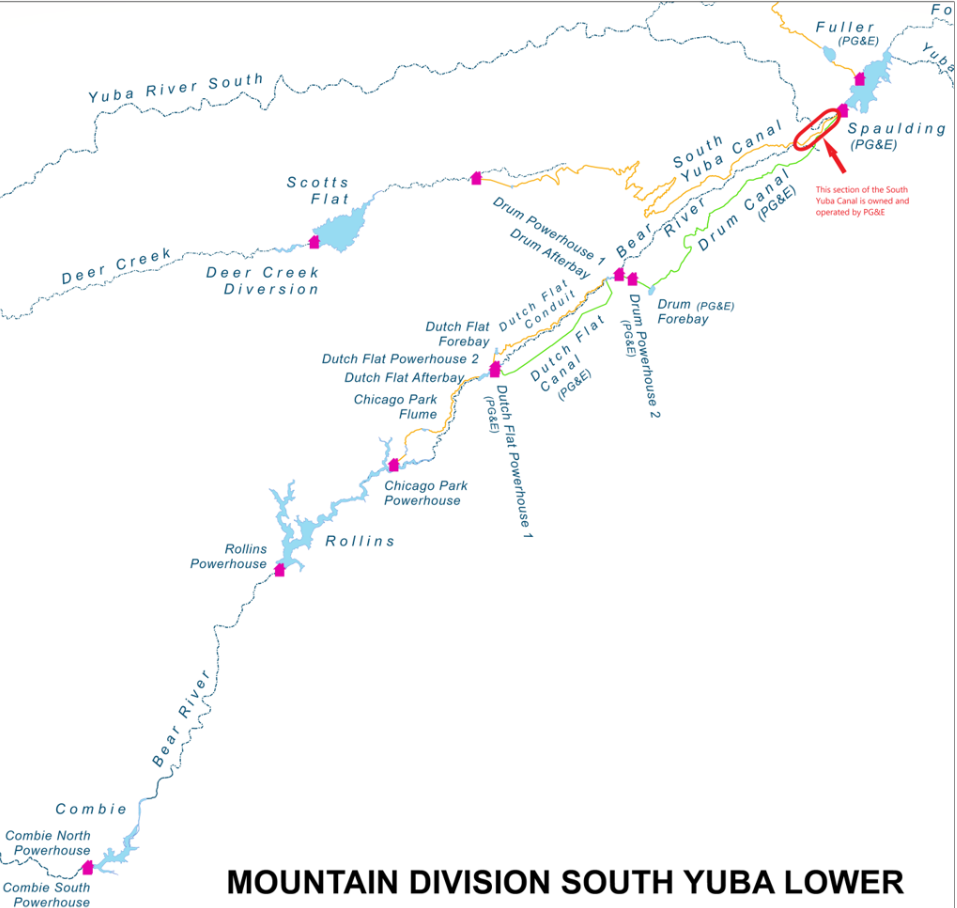The Future of Hydropower in the Yuba
Cell phones, air conditioning, televisions, computers, iPads, and clothes dryers; these are just a few of the things that tie each of us to California’s ever-growing need for electricity. On October 2nd, SYRCL teamed up with the U.S. Forest Service, Placer County Water Agency and the Nisenan Nevada City Rancheria to understand the future role of hydropower in the Yuba watershed in meeting California’s energy demands. Watch now on Facebook Live to learn more (programming begins at 11:40).
Why is Hydropower Important to the Yuba Watershed?
SYRCL is involved in three major hydroelectric projects in the Yuba and Bear River watersheds: Yuba-Bear Project, the Drum-Spaulding Project and the Yuba River Development Project. The Yuba and Bear River watersheds have some of the oldest hydropower operations in the state, and they play an important role in our community. In the face of climate change and the evolving regulatory landscape, the future of hydropower is an important topic to discuss.
Andy Fecko from the Placer County Water Agency presents his review of the current energy crisis in California, where we are heading and the hurdles we currently face as a state. He breaks down California’s energy use and discusses the shortfalls of using wind and solar technology to meet daily electrical demands. As California reduces its dependency on natural gas for electricity, he believes that hydropower will become even more important until new technologies are developed.
How can Hydropower help in the Yuba Watershed?
Amy Lind of the U.S. Forest Service explains how regions can benefit from the safe development of hydropower in meeting the shared goals and interests of all local stakeholders through a tool called FERC Hydropower Relicensing, often referred to as “relicensing.” The Federal Energy Regulatory Commission (FERC) Hydropower Project Relicensing is a lengthy, in-depth process required by law every 30-50 years by all hydropower operators in the United States. Relicensing requires collaboration with multiple stakeholders, including state and federal agencies, local nonprofits, landowners, and water districts to review the hydropower project.
Hydropower Project Relicensing is required to give equal consideration to:
- Energy conservation & power generation
- Water supply and the protection of fish & wildlife
- Public benefit and the protections of recreational opportunities
- Cultural resources and the monitoring of natural resources
This brings the interests of all to the table to balance everyone’s needs, not just one group or investor. When goals and interests are aligned among all contributors, significant changes in river condition and management are possible.
Community Collaboration is Key
One such relicensing stakeholder is Shelly Covert of the Nisenan Nevada City Rancheria, a regular contributor to the FERC process. She speaks about how so much has been lost throughout history in our watershed and we need to hold on to what we have left. The best way to do this is to collaborate and solve our future energy crisis together while protecting and preserving the current resources and home we have.
Want to know more?
Along with the expert presenters, SYRCL has participated in hydropower relicensing for years and used the unique collaborative opportunity to advocate for river restoration. Ideally, these new licenses will provide the Yuba and Bear River watersheds with enhanced stream flows, more natural flow fluctuations, passage of wood and sediment for habitat, and recreational enhancements. Check out our Dams and Hydropower page to remain up to date on the latest in hydropower in the Yuba and Bear River watersheds.
SYRCL thanks all the esteemed speakers for presenting, and community members for participating in this successful second workshop. Sign up below to hear about the next “Watershed Science and Policy” workshop.
To keep our citizens aware of the issues we face in our watershed, SYRCL created this quarterly workshop series “Watershed Science and Policy in the Sierra Foothills.”
- Review our last workshop on Surface and Groundwater Crucial for a Sustainable Water Future here.
- Join us for the 3rd event of the Series during the Wild & Scenic Film Festival that will look at Water in the Sierra Foothills in the face of climate change.
Did you enjoy this post?
Get new SYRCL articles delivered to your inbox by subscribing to our ENews.





